England - Sep18 - HMS Victory & Portsmouth
|
|
Seeing the HMS Victory at Portsmouth has long been on my bucket list. I have read many books on Nelson and the Battle of Trafalgar and even wrote a paper in college about it. Today was the day! Lynnette and I drove from Lewes where we had stayed overnight to the Portsmouth Historical District and were there when it opened.
From Wikipedia: Portsmouth is one of the world's best known ports. Portsmouth's history can be traced back to Roman times. A significant naval port for centuries, Portsmouth has the world's oldest dry dock. In the sixteenth century, Portsmouth was England's first line of defence during the French invasion of 1545. By the early nineteenth century, the world's first mass production line was set up in Portsmouth Dockyard's Block Mills, making it the most industrialised site in the world and birthplace of the Industrial Revolution. Portsmouth was also the most heavily fortified town in the world, and was considered "the world's greatest naval port" at the height of the British Empire throughout Pax Britannica. In 1805, Admiral Nelson left Portsmouth to command the fleet that defeated the Franco-Spanish at the Battle of Trafalgar. HMNB Portsmouth is considered to be the home of the Royal Navy and is home to two-thirds of the UK's surface fleet.
There is a lot to see at the Portsmouth Historical District besides the HMS Victory. There is also the National Museum of the Royal Navy, the Mary Rose, the HMS Warrior (an 1860 steel hulled sail warship), a Battle of Jutland exhibit, a Harbor cruise, and some other things. We were there most of the day, saw most of it, but didn't get to see it all.
But our first stop, of course, was the HMS Victory. After all these years, I am finally here!
|
| |
 |
|
Is it necessary to remind you of the significance of this ship? HMS Victory was Admiral Nelson's flagship at the Battle of Trafalgar in 1805, when twenty-seven British ships of the line led by Admiral Lord Nelson aboard HMS Victory defeated thirty-three French and Spanish ships of the line under French Admiral Villeneuve. The battle took place in the Atlantic Ocean off the southwest coast of Spain, just west of Cape Trafalgar. The Franco-Spanish fleet lost twenty-two ships and the British lost none. It was one of the most significant naval battles in history, right there with Salamis, Lepanto and Midway. |
| |
 |
|
| Heading up the gangway of the great ship. |
| |
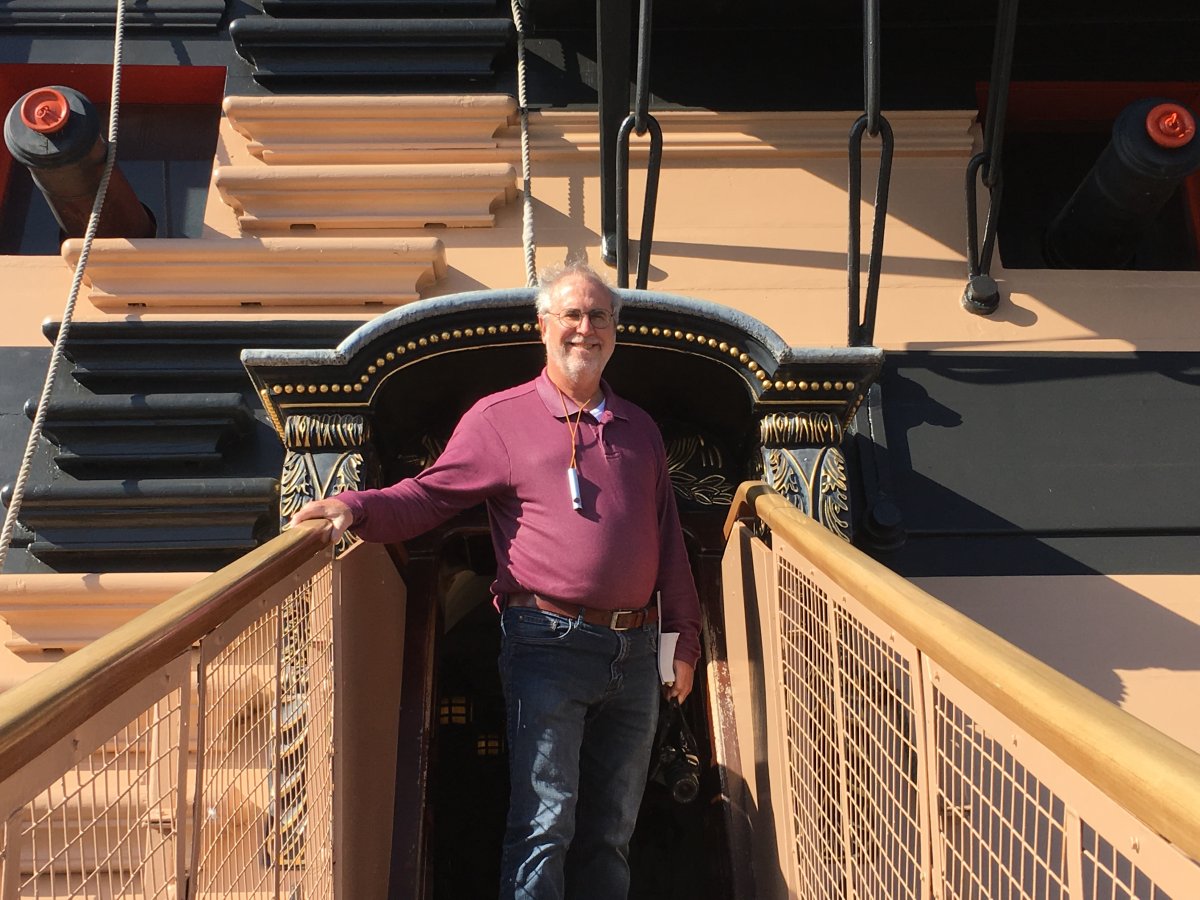 |
|
HMS Victory is a 104-gun first-rate ship of the line of the Royal Navy, ordered in 1758, laid down in 1759 and launched in 1765. She was already 40 years old at Trafalgar. After 1824, she was relegated to the role of harbour ship. In 1922, she was moved to a dry dock at Portsmouth, England, and preserved as a museum ship. She has been the flagship of the First Sea Lord since October 2012 and is the world's oldest naval ship still in commission with 240 years service by 2018.
As far as I know, Victory is the only Ship of the Line still in existence. Most Americans are familiar with the USS Constitution in Boston, and USS Constellation in Baltimore, but they are only 44-gun large Frigates.
|
| |
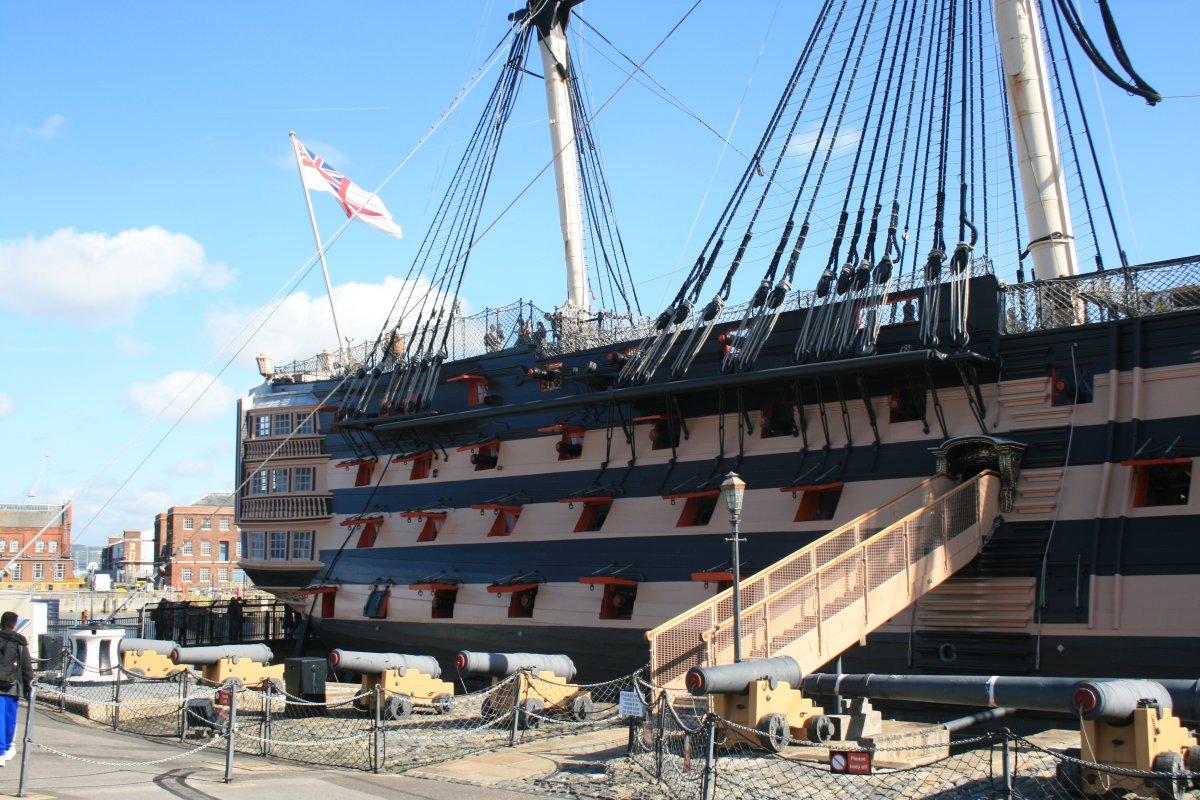 |
|
| They are currently updating the ship's supports. Previously there weren't enough and the ship's great weight was causing it to sag in between supports. |
| |
 |
|
| Victory's paint scheme is now exactly as it was at Trafalgar in 1805. |
| |
 |
|
| Lynnette admiring the great ship. |
| |
 |
|
|
The White Ensign of the British Royal Navy.
Interestingly, at least to me, the U.S. Navy destroyer Winston S. Churchill is the only U.S. warship to fly the White Ensign along with the Stars and Stripes to honour her British namesake, the former prime minister.
|
| |
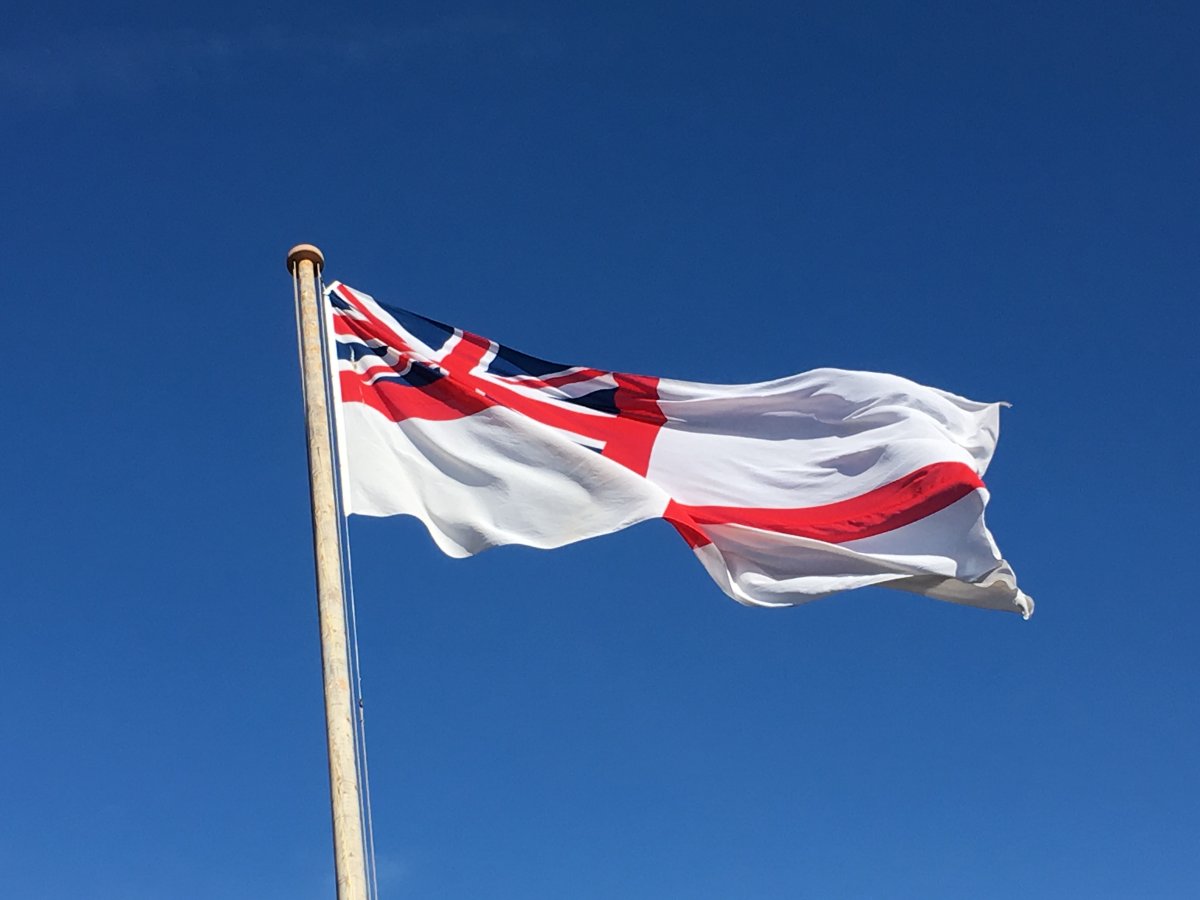 |
|
| Lynnette standing by one of the three mainmasts. This is the aft mast. They are not the originals which were wood, of course. These are steel masts scavenged from a later ship, and are too heavy, so that's why she has no upper masts and minimum rigging. In the future, they hope to replace these steel masts with much lighter fiberglass ones while will allow them to put the full masts back on. |
| |
 |
|
|
Admiral Horotio Nelson was one of the great fighting Admirals in history, if not the greatest. He was the victorious Admiral of not one but three major sea battles: the Nile, Copenhagen, and of course Trafalgar. But during the Battle of Trafalgar, he was mortally hit by a sharpshooter from the French Ship of the Line Redoubtable. This is the spot. He was taken down deep into the ship where he died three hours after he had been shot.
|
| |
 |
|
|
A better look of the Quarterdeck where Nelson fell. After her battle damage was repaired, Victory carried Nelson's body to England, where, after lying in state at Greenwich, he was buried in St. Paul's Cathedral on 9 January 1806.
Aft of the quarterdeck was the Captain's Quarters, with a dining cabin, day cabin and a bedroom.
We had audio devices which described various spots on the ship. In addition, there were docents about who could answer any question. The ship to me looked to be well-maintained and in excellent shape.
|
| |
 |
|
|
Below the Captain's Quarters, on the Upper Gun Deck, was the Admiral's Quarters or Great Cabin. It consisted of the Admiral's Dining Cabin, the Admiral's Day Cabin, an ante-room or Steerage where the Admiral's valets and clerks gathered.
This is the Dining Cabin. It was used by the Admiral to entertain senior officers in style.
|
| |
 |
|
|
Further aft was the Admiral's Day Cabin or Stateroom. This was the Admiral's office, where he planned battle strategy, commanded the fleet and wrote his dispatches. Concealed in the 'quarter galleries' on both sides are 'seats of easement' or private toilet facilities. There are also gun ports, carefully hidden by bulkheads or seats. This room had to be cleared prior to battle. Nelson slept in a little side room behind that door on the left.
Below the Admiral's Quarters was the Officer's Wardroom.
|
| |
 |
|
| The ship's bow. |
| |
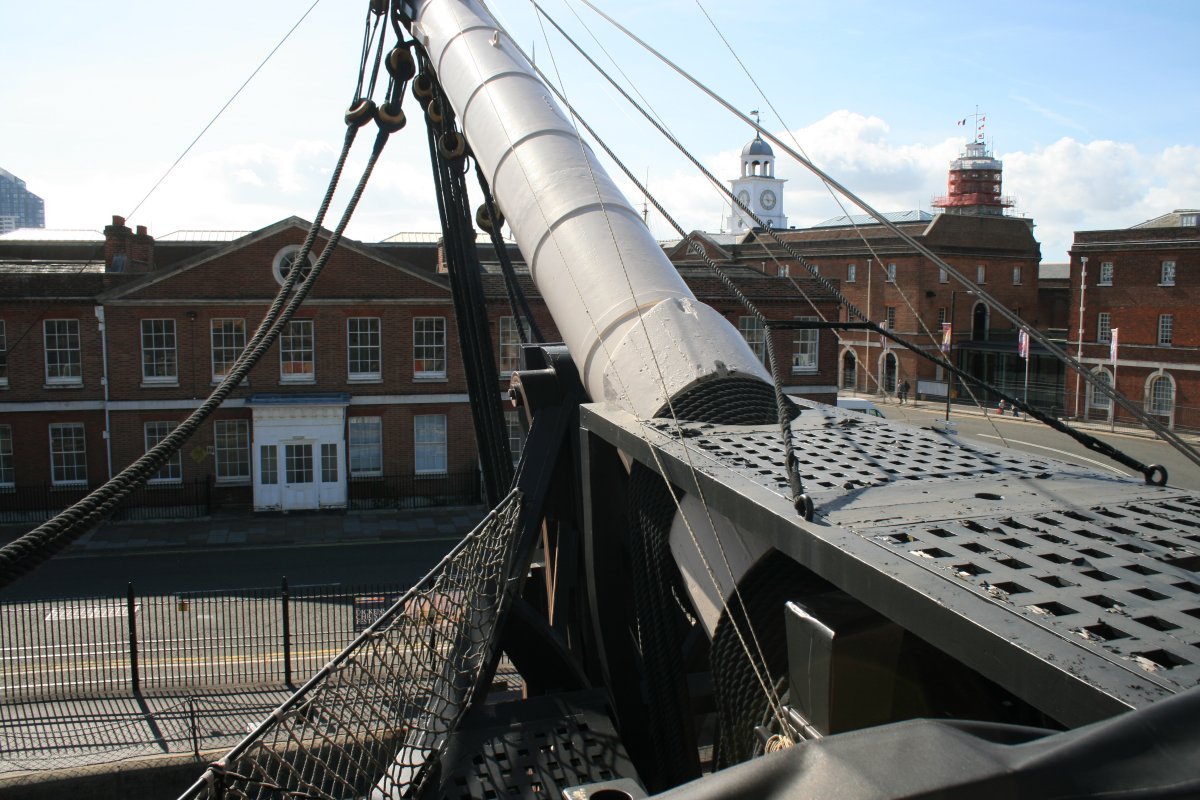 |
|
| The ship's boats used for going ashore or transportation to other ships. |
| |
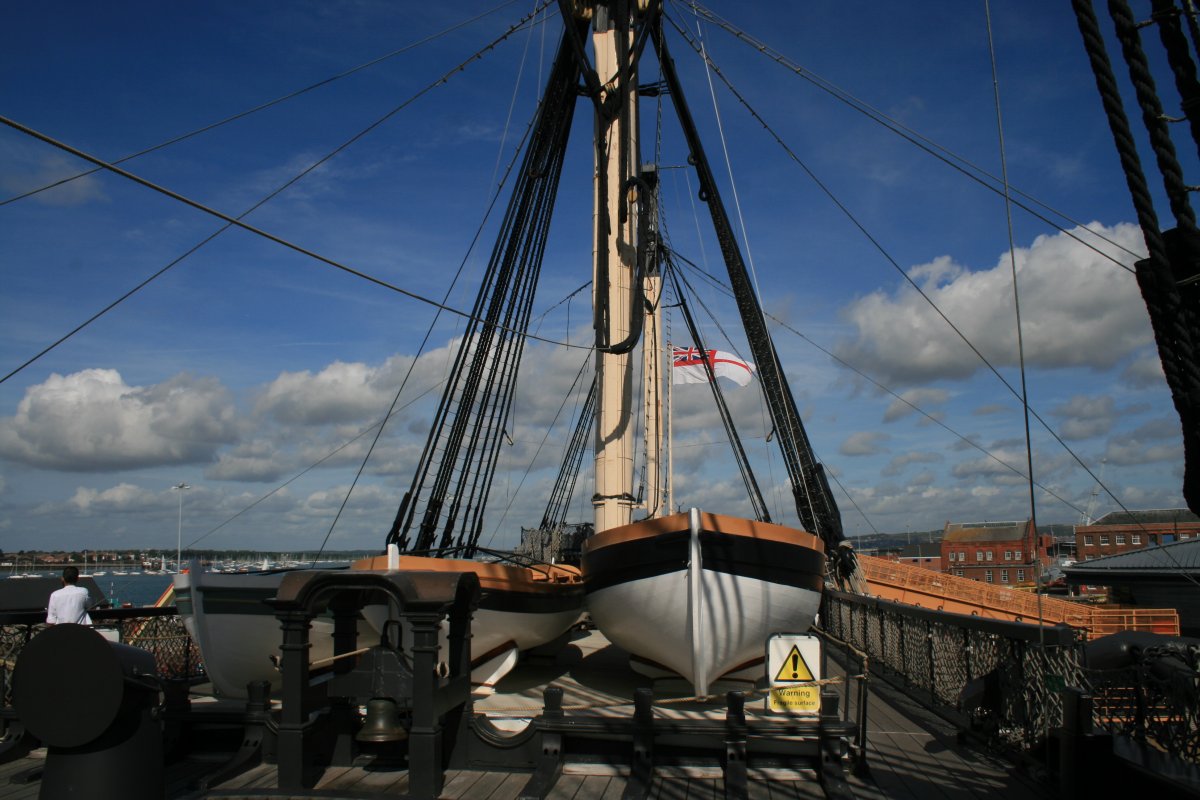 |
|
|
Because the Victory was a "triple-decker", she has different size guns for each deck. The heaviest guns were the thirty 42-pounders on the lower deck. Then came the twenty-eight 24-pounders on the middle deck. Finally came the thirty 12-pounders on her upper deck, together with twelve 12-pounders on her quarterdeck and four guns on the forecastle. (The pounds refers to the weight of the shot the cannon fires)
Below decks, it was clear that this was a ship designed for war, and nothing else. Everything was subordinated to the firing of the guns and operating the ship. The crew had to be taken care of, of course, but other than the Admiral and Captain, living conditions were spartan. Although Victory is a big ship, it is hard to believe a crew of 850 would live aboard for months on end.
Below decks, a docent showed us exactly how the crew of 12 fired a gun, and how, and what, they would eat.
We were able to go throughout the ship, even way down deep where the powder and food were stored, and the bilges.
|
| |
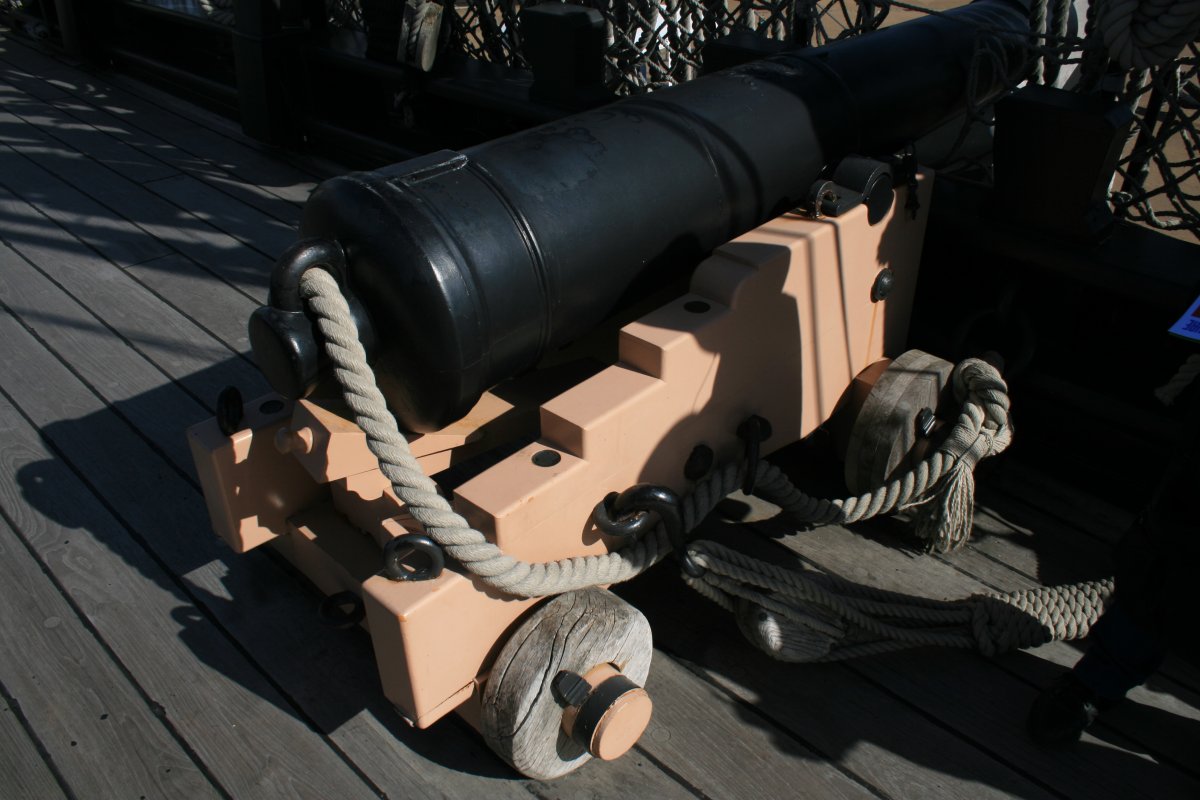 |
|
| A good look at the main battery of the HMS Victory. The audio tour made clear the mayhem and carnage that must have occured on these big ships of the line when they were going at each other. |
| |
 |
|
|
The original support was that big wedge-shaped one. The newer, more numerous supports are the shock-absorber-like looking ones.
|
| |
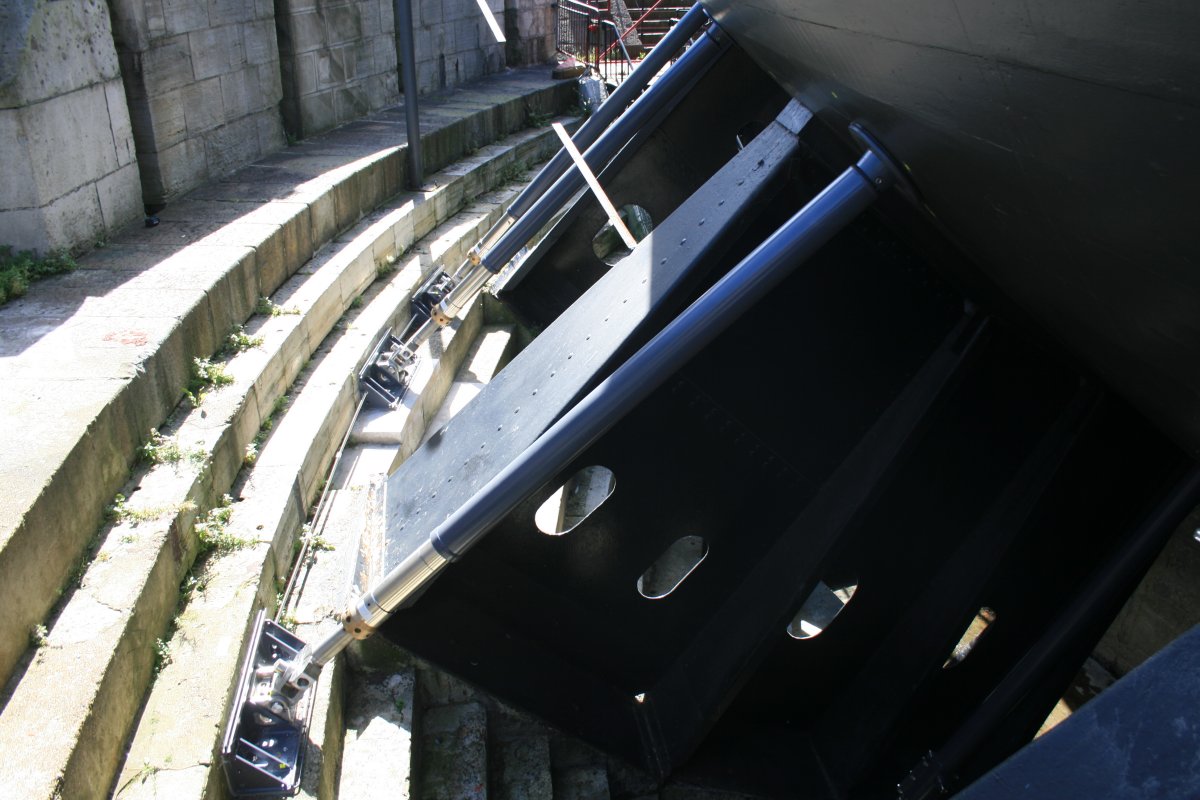 |
|
| A better look at the Victory's bow. The ship could make up to 11 knots in a strong wind. |
| |
 |
|
| A good look at the complete HMS Victory. I hope they are able to put the full masts and rigging on soon. HMS Victory is truly a national historic treasure and the British have done it right preserving her. |
| |
 |
|
|
Next to the Victory was this strange looking building which contained the Mary Rose, an English warship from 1511 to 1545, during most of the reign of Henry VIII. It was the state-of-the-art Battleship in the sixteenth century, as HMS Victory was in the eighteenth. In 1545, during an attack by the a French fleet in Portsmouth harbor, the Mary Rose abruptly rolled over and sank. A search for the Mary Rose started in 1965 and the starboard side of the ship which had been preserved in mud and clay was raised in 1982.
The exhibition of the ship and artifacts is world-class and most impressively done. The Mary Rose exhibit is not part of the Portsmouth Historic District ticket, so you have to pay extra to see it, but it was well worth it in my opinion.
|
| |
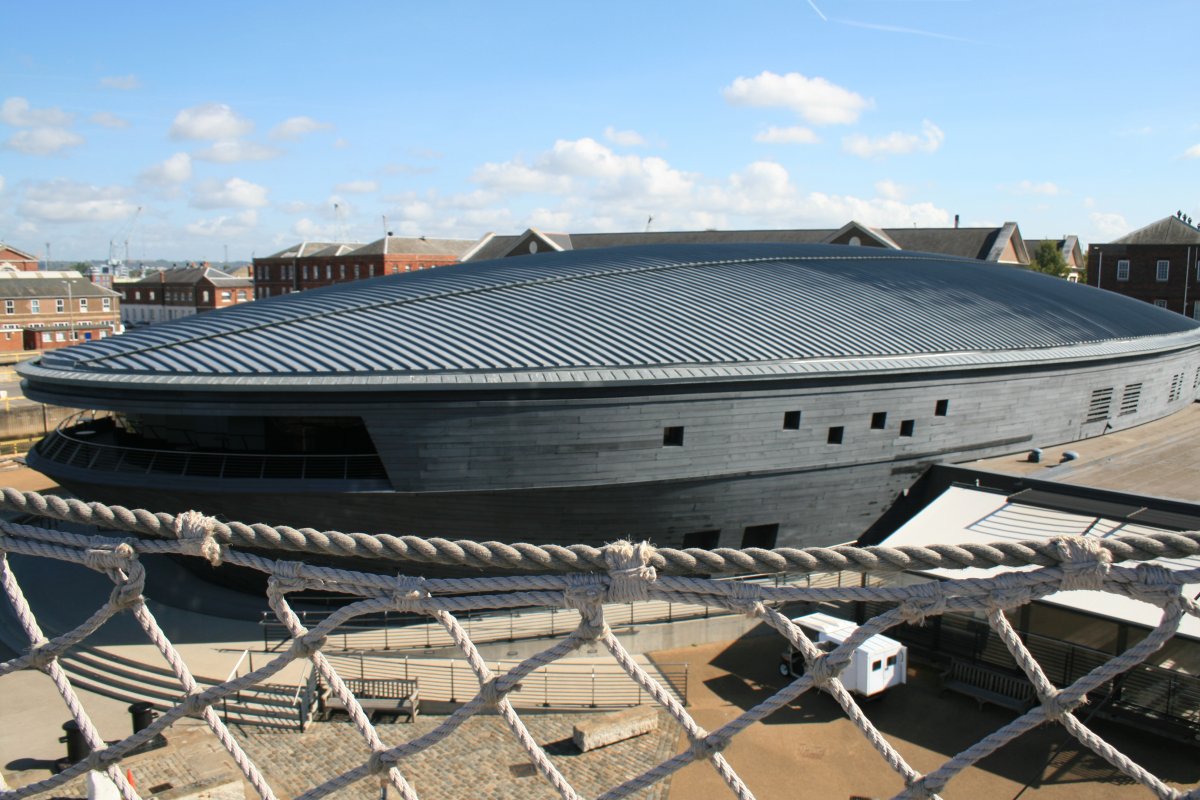 |
|
| Lynnette next to King Henry the Eighth! In the backgrond is a painting of the Mary Rose suddenly rolling over and sinking in Portsmouth harbor in 1545. |
| |
 |
|
| In addition to the starboard side of the ship, they were able to recover many artifacts -- including human bones and clothes -- which were on display as well. Here, I'm trying my hand at an English longbow. |
| |
 |
|
|
The next stop was the National Museum of the Royal Navy. It was well worth seeing and I enjoyed it, but I felt that the great Royal Navy was deserving of something much bigger and better. After all, the Royal Navy has such a long and distinguished history; the museum as is only captured a small portion of it. It should be in a big facility like some of the Air and Space museums, or British Museum, for example.
I love the paintings of the big Ships of the Line. There were no cameras back then; paintings were the only way of capturing how things looked.
|
| |
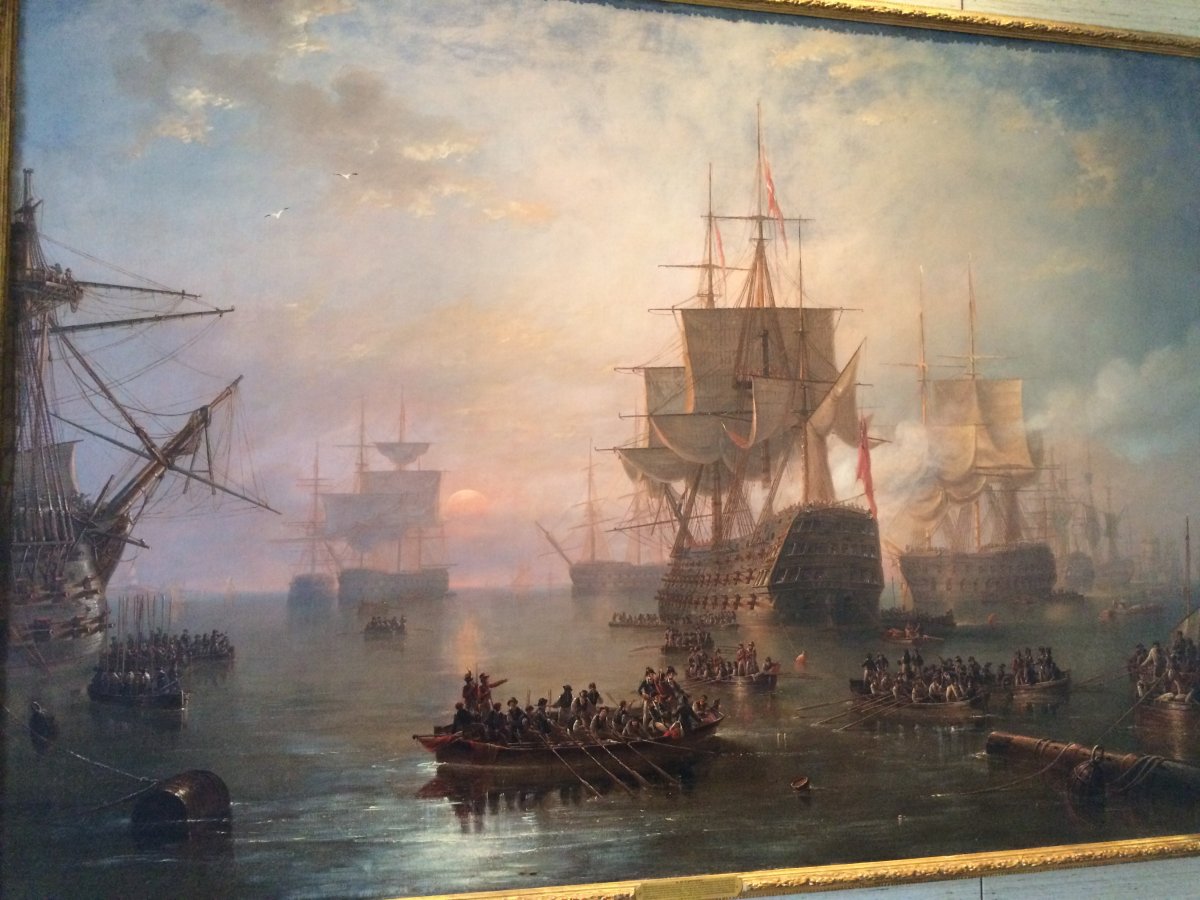 |
|
|
A painting during the Battle of Trafalgar.
|
| |
 |
|
| The museum had an entire section devoted to Admiral Horotio Nelson which I really enjoyed. Here Lynnette stands next to the great man. He wasn't very big, and by Trafalgar had lost an arm and an eye in previous battle wounds. |
| |
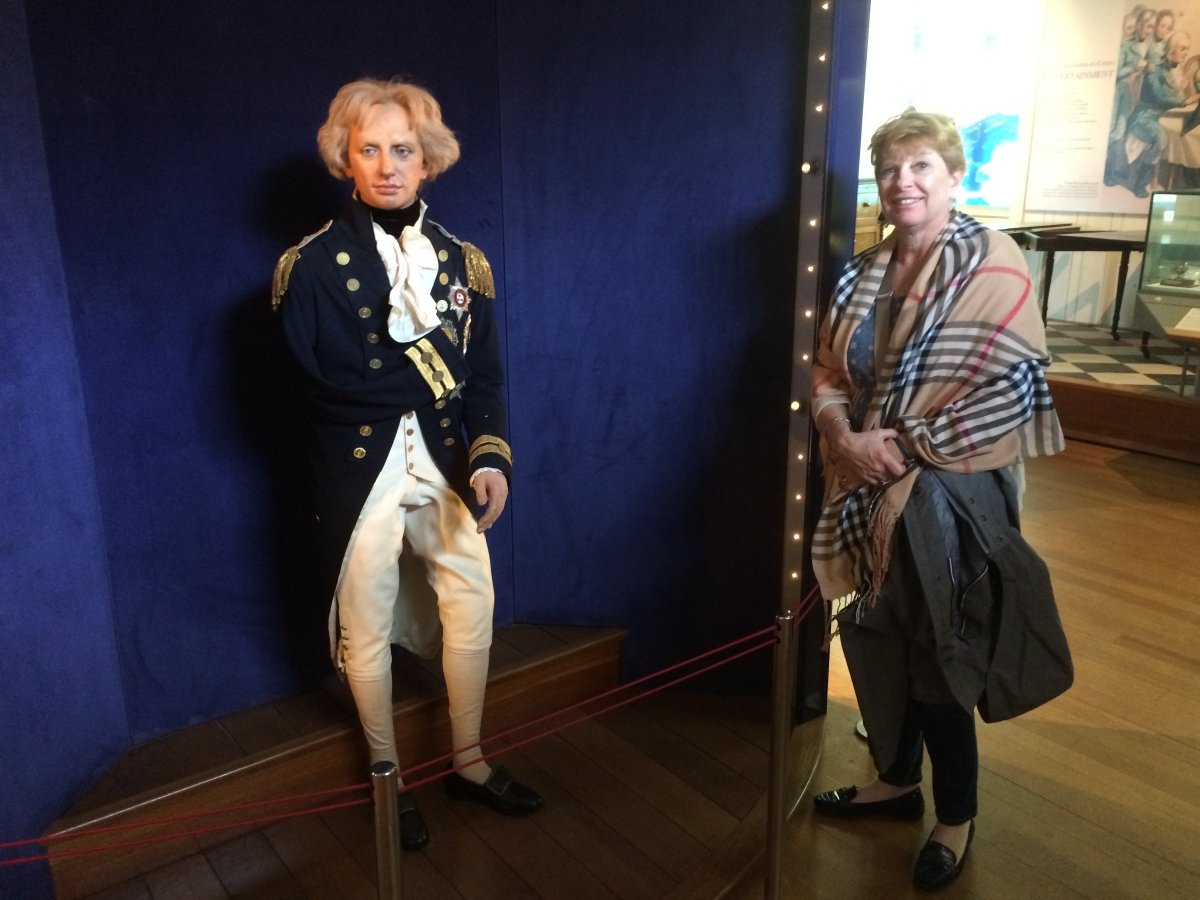 |
|
|
A painting of ships associated with Nelson during his naval career.
|
| |
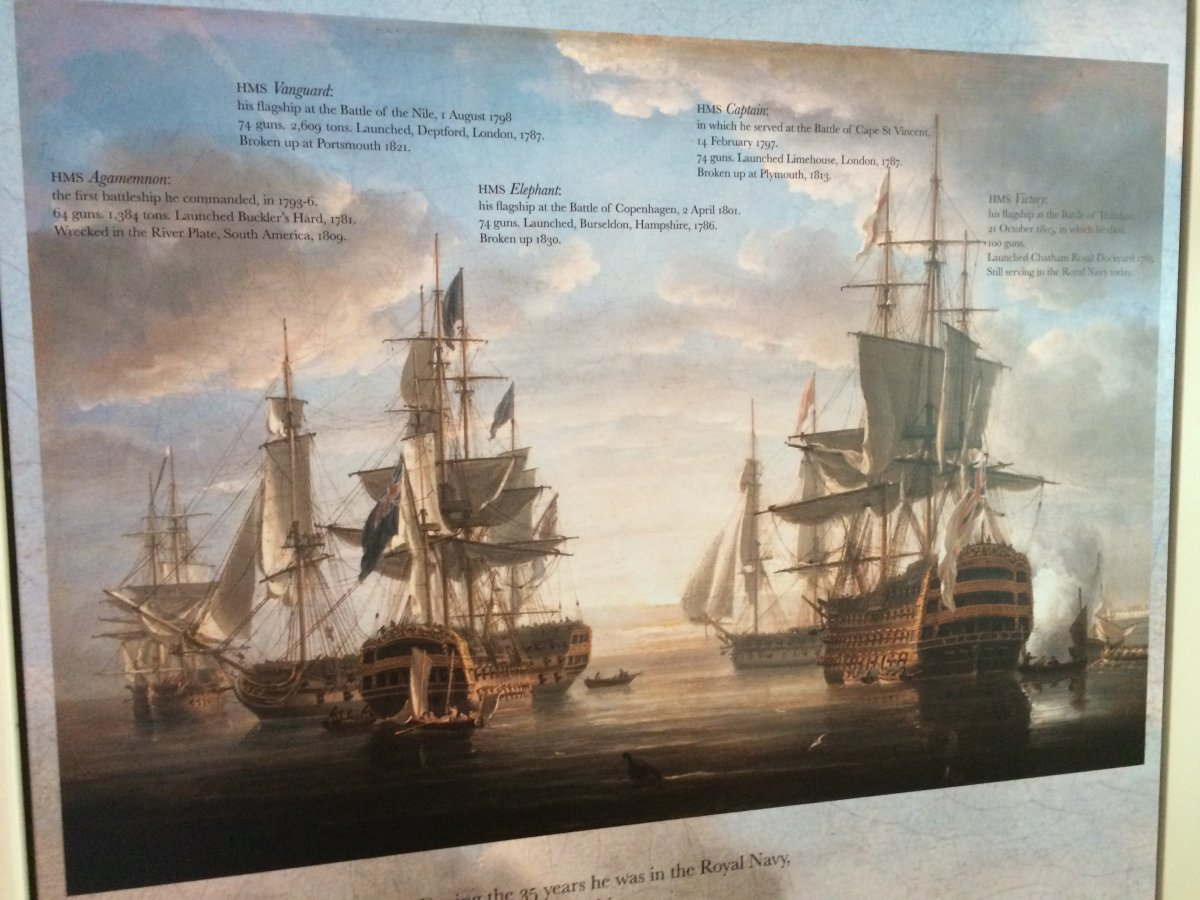 |
|
| A model of a standard British 74-gun Ship of the Line. |
| |
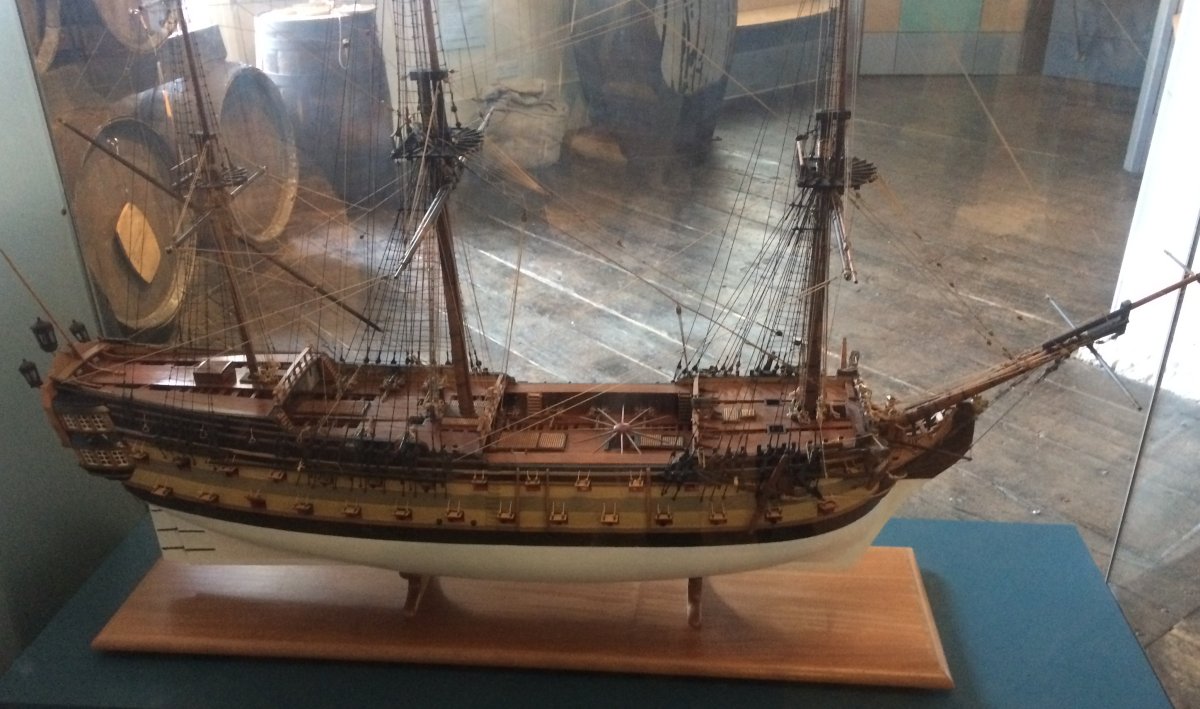 |
|
| A British Corvette which fought the U-Boats in the North Atlantic during World War II. Notice the open bridge. It was no picnic serving on these ships. |
| |
 |
|
| I believe this is a British cruiser during World War I. |
| |
 |
|
|
A 15-inch shell and portion of a 15" gun barrell, used on British battleships during World War II.
|
| |
 |
|
|
Standing outside Boathouse 4.
|
| |
 |
|
|
HMS Warrior, Britain’s first iron-hulled, armoured battleship. Launched in 1860, at a time of empire and Britain’s dominance in trade and industry, she was the pride of Queen Victoria’s fleet. Powered by steam and sail, she was the largest, fastest and most powerful warship of her day and had a lasting influence on naval architecture and design. Yet by igniting a new era in naval technology, she was obsolete within 20 years.
|
| |
 |
|
| While I checked out the Battle of Jutland exhibit, Lynnette went on the harbor cruise, which she found very interesting. |
| |
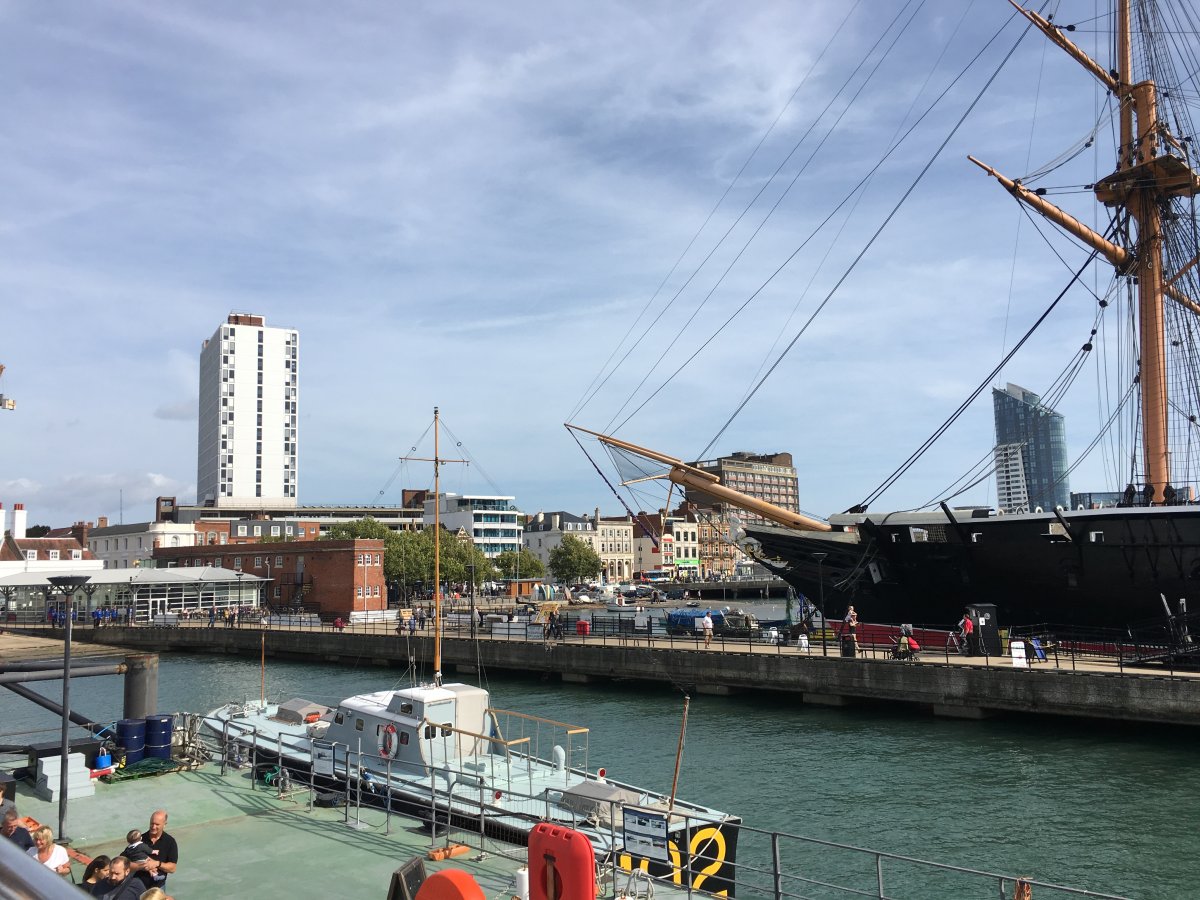 |
|
|
The striking Spinnaker Tower.
|
| |
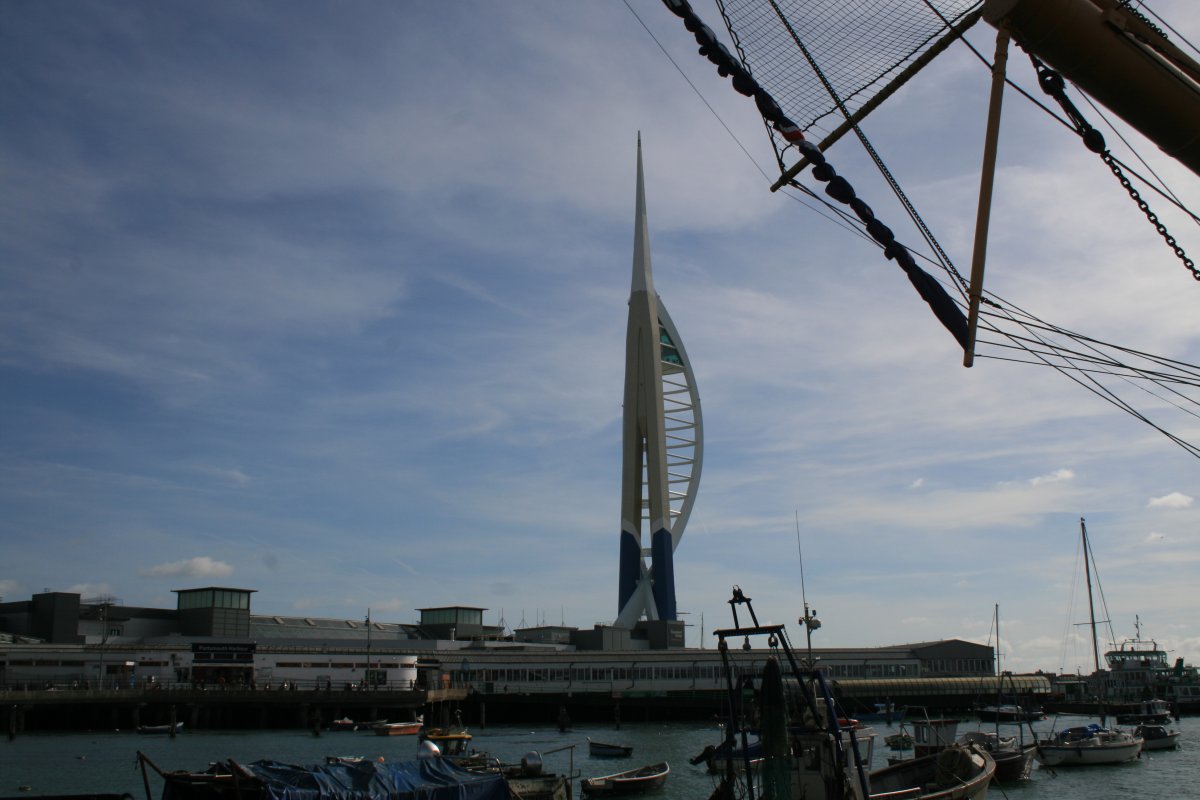 |
|
| Another look at the HMS Warrior. |
| |
 |
|
|
Portsmouth is still the home of the modern Royal Navy. Here is the HMS Defender, a Type-45 Air Defense Destroyer. The two new Queen Elizabeth-class aircraft carriers will be based here.
I would have liked to spend another day in Portsmouth -- there have a D-Day Museum, the Portsmouth Museum, the Spinnaker Tower, a beach -- plus there are things to do in nearby Southhampton as well. But we were out of time and had to get going. Maybe someday we'll be back.
|
| |
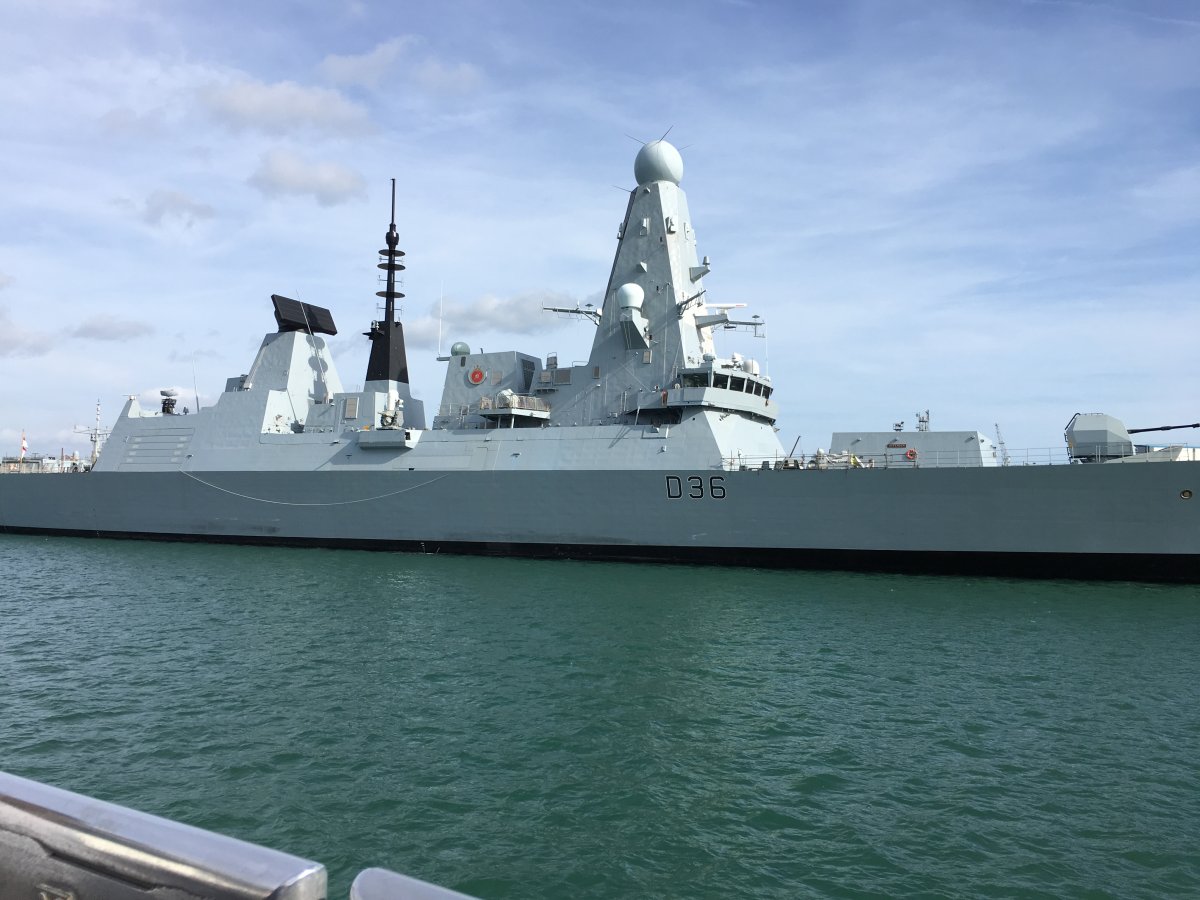 |
|
| |
|
|
| |
| |
|
|
|
|
|
|




































